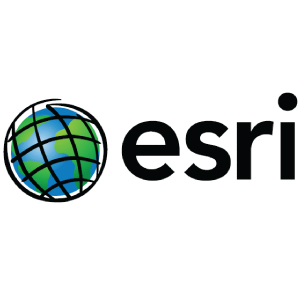This blog is an excerpt from GovLoop’s recent industry perspective, Creating Smart Installations With the Power of GIS. Download the full perspective here.
Today, citizens are calling on governments to be more transparent, efficient, collaborative and productive. This has led to more and more government officials using technology and data to address community needs and make sound, data driven policy decisions – factors that contribute to an effort known as the “smart community” movement. The movement advocates the use of data and analytics in government to better the lives of citizens.
In the past decade, the smart community movement has taken off in response to these rising citizen demands and expectations around technology, advocating that municipalities and counties rethink the way local governments deliver services and address the issues of our times.
The rise of the smart community movement has inspired many other areas of the public sector to make use of technology to serve its citizens, enable interdepartmental collaboration through open data sources, give mobile access to information and focus on the efficient collection of real-time data.
But one area of the public sector that could stand to benefit the most from the tenets of smart communities are government installations. Government installations – large-scale and complex government facilities – need to focus on becoming smart and taking advantage of technology to make better decisions and be more efficient. One way they can do this: Use existing GIS platforms and technology to move their installation along the path to becoming “smart.”
To discuss what being a smart installation truly means and how a government facility can become one, GovLoop and Esri have partnered for this industry perspective. In the following pages, we’ll discuss the technology behind smart installations; explain why they matter to the public sector and the citizens it serves; explore how GIS supports smart installations and give tips on how large-scale facilities can
Leveraging the Smart Community Framework for Installations
Every smart community blueprint emphasizes a hub approach that enables collaboration and information sharing between departments and people. To become a smart community, organizations need workflows and processes that encourage data sharing for timely, data-driven decisions.
The goal of a smart community – and therefore a smart installation – is to deliver improved services and make the installation a place that functions efficiently while contributing to the overall readiness of the organization.
An installation doesn’t just become smart; it needs to have a strategy for becoming smart. And it can look to the smart community approach.
Five Important Steps:
- Use a world-class GIS platform to track assets with accuracy. Location plays a key role in the management and operation of installations. To apply spatial thinking to installation needs and use location as a tool to inform decisions, installation leaders should invest in a world-class GIS platform. This solution needs to serve GIS professionals, knowledge workers who simply use GIS, field workers and decision-makers. It also needs to support workflows such as collecting data, analyzing and performing what-if scenarios against information, improving operational awareness and improving field operations.
- Build a location strategy to analyze and plan management strategies. Next, determine where the highest-need areas are in your installation and where a robust GIS platform can have the most valuable impact. When you’re just starting your smart installation journey, it’s important to prioritize your efforts. As you progress, you can revisit this step and expand which assets and strategies you apply GIS technology to. “Launching Your Location Platform,” a white paper from Esri, offers a number of tips to help get your locations strategy off the ground.
- Deliver real solutions to control operations. Once you have a platform in place, and a strategy to use it, it’s time to really deploy solutions. One such solution is the ArcGIS application, which has more than 150 ready-to-use applications to get you started; read the following section about further advice for using Esri products to create your smart installation.
- Develop strategic partnerships to drive efficiency. Maps are a common language for sharing. One of the biggest benefits of using GIS platforms is the ability to connect users within and across organizations. Even with that collaboration, however, some installation leaders may need more assistance to make the most of GIS. In those cases, consider moving beyond your organization.
- Seek communities of practice that are experienced with GIS and its benefits. Esri offers a number of channels, including meet-ups and online portals, that allow users to share best practices. Take advantage of the Esri community and reach out to the partner organizations you have access to through the ArcGIS platform.
To learn more about how you can create a location strategy and use a GIS platform to use installations to transform operations and be smart download the full perspective here.






Leave a Reply
You must be logged in to post a comment.